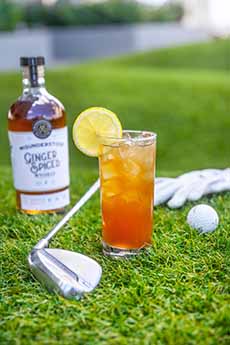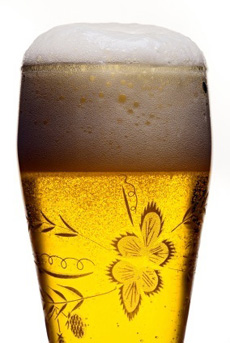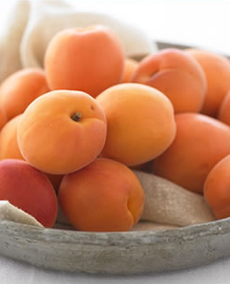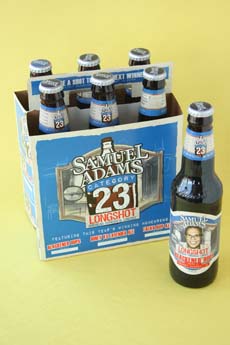|
When you think of a refreshing warm-weather drink, do you think of beer, iced tea, lemonade, or ginger ale?
If you mix two of them together in a half-and-half drink, you’ll create a summer refresher: an Arnold Palmer or a Shandy, depending on the recipe. You can purchase them ready-bottled; but like most things, homemade tastes better.
THE ARNOLD PALMER
Combine equal amounts of homemade iced tea and lemonade in a tall glass. You can vary the proportions if you prefer one flavor over the other.
The drink, also known as a half and half, is named for golf legend Arnold Palmer. It was his soft drink of choice—he mixed it up at home—and is popular enough that Country Time and Sweet Leaf, among other companies, bottle it.
Mix your alcohol of choice into an Arnold Palmer and you get a John Daly. According to Golf Digest, Mr. Daly is not at all happy about this, claiming copyright infringement.
To give you some ideas about how the recipe has expanded, AriZona Beverage Company sells six variations: Lite Iced Tea & Lemonade, Zero Iced Tea & Lemonade, Lite Green Tea & Lemonade, Pomegranate Green Tea & Lemonade, “Southern Style” Sweet Tea & Pink Lemonade, and Peach Sweet Tea and Lemonade.
THE HISTORY OF THE ARNOLD PALMER
One day during the late 1960s, after a long morning of designing a golf course in the Palm Springs area, the legendary golfer Arnold Palmer was ready for lunch. He asked the waitress for a mixture of half lemonade and half iced tea.
A woman sitting nearby overheard what he ordered and told the waitress, “I’ll have that Arnold Palmer drink.” Thus the Arnold Palmer tea and lemonade combination was born.
Arnold had been drinking it for years; his wife Winne made them for him.
But now, word of the Arnold Palmer tea and lemonade beverage spread throughout America via his army of fans [source].
While the Arnold Palmer contains no liquor, more than a few fans of the drink have given it a hit of spirits (gin, vodka, rum, whiskey, whatever).
THE SHANDY
Shandy, short for shandygaff, is a beer diluted with a non-alcoholic drink: ginger beer, ginger ale, carbonated lemonade, citrus-flavored soda, or cider, for example. We prefer ginger beer or Mike’s Hard Lemonade (which, at 5.2% ABV, does no diluting!).
The proportions are half-and-half; but as with an Arnold Palmer, they can be adjusted to taste.
Fentimans, a U.K. brand sold in the U.S. (and a NIBBLE Top Pick Of The Week), bottles a lemonade-based Shandy made of a 70%-30% mixture of beer and carbonated lemonade with a 0.5 ABV (1 proof). The lower proportion of beer enables it to be sold as a soft drink.
The origin of the term “shandygaff” is unknown; it first appeared in print in 1853. Shandy is a surname in the U.K.; and in Ireland, the name is a variant of Shaun (John). Gaff is an old term for a fishing hook. Perhaps the drink was first mixed up by a steward named Shandy?
You don’t need a gaff: Mix up your own Arnold Palmer or Shandy. Have an “AP & S” party and let guests create their own variations.
> Here’s how to have a shandy party.
|
|

[1] The Arnold Palmer, half iced tea, half lemonade (pnoto © Fahrwasser | Panther Media).

[2] If you really want to, you can add a splash of whiskey or other spirit (photo © Misunderstood Whiskey | Unsplash).

[3] A Shandy is half beer, half carbonated lemonade or ginger beer (photo © Milos Luz | iStock Photo).
|






